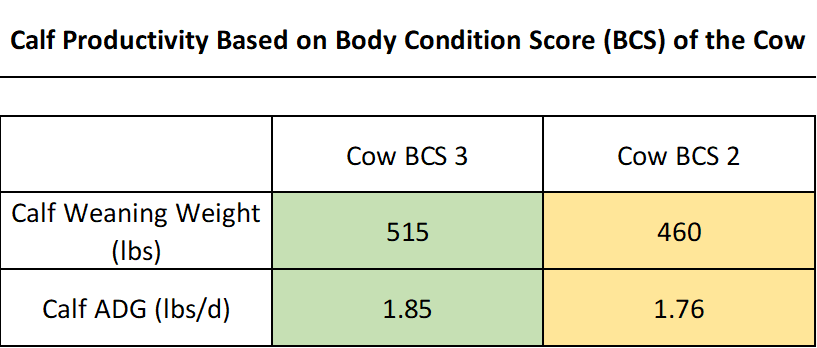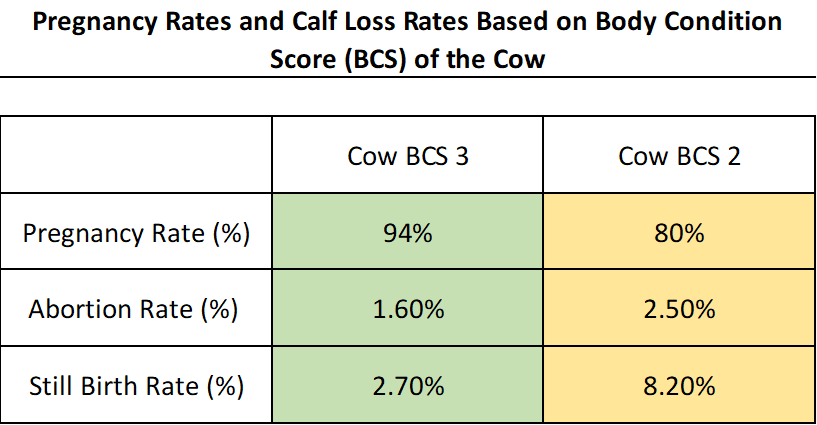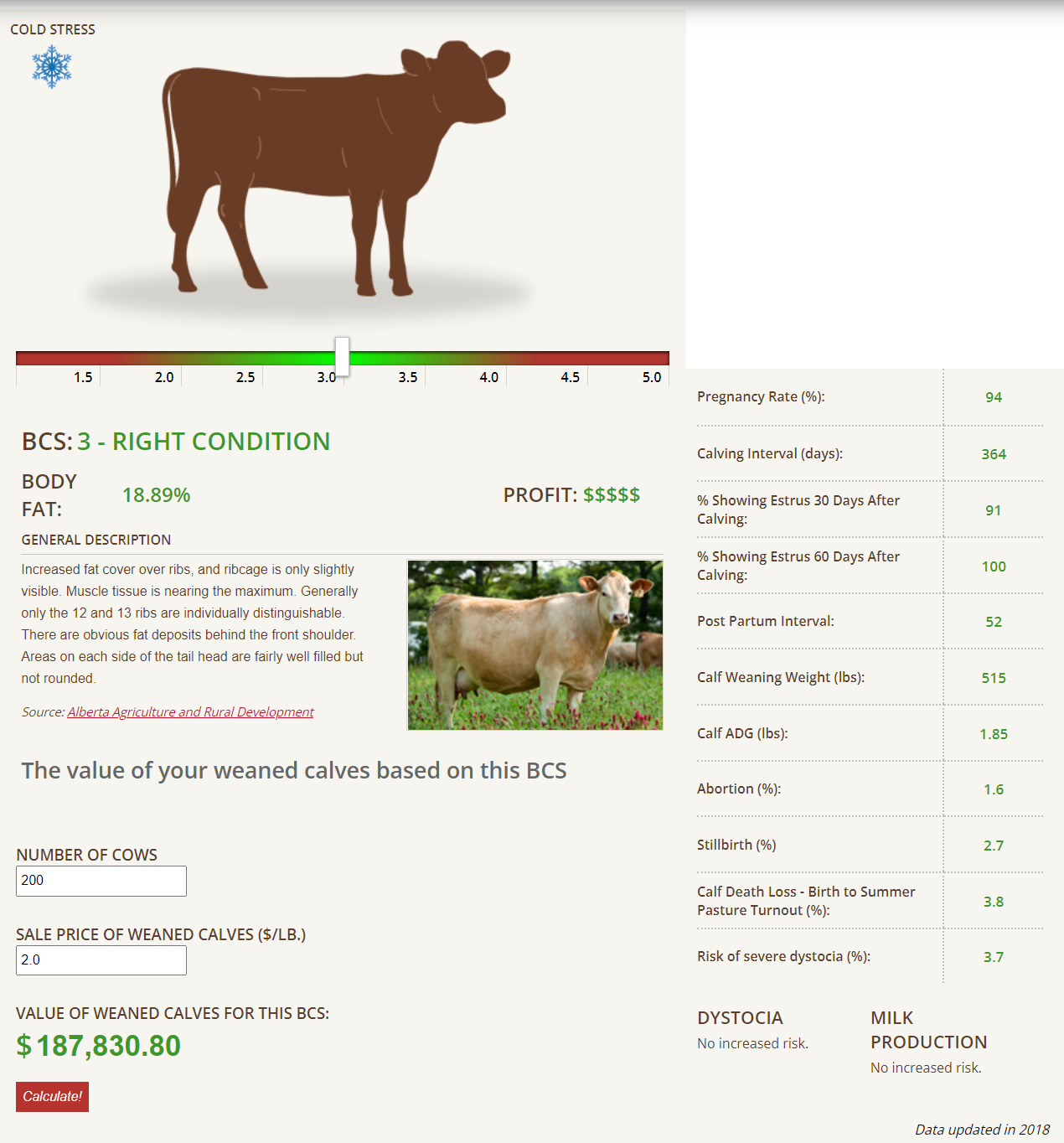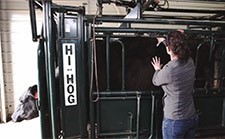Optimum Condition = Maximum Production
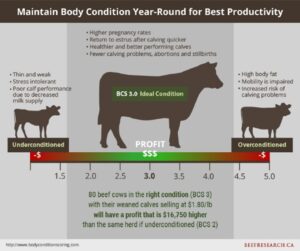
When feed supplies are short, it may be tempting to feed less and allow cows to lose body condition, but this short-term solution can have a long-term impact on the performance and profitability of a cow herd. A herd of cows maintained in the right condition with an ideal layer of fat cover will have more (and heavier!) calves than a herd of thin or over-fat cows.
In a drought year, when feed access and quality is uncertain, hands on body condition scoring (BCS) is a simple and accurate method to assess the condition and productivity of your herd.
It is easier and less costly to maintain the condition of a cow with a BCS of 3 than it is to maintain and ideally improve the condition of a cow who is under conditioned especially going into winter months and calving season.
Maintaining proper BCS results in increased economic returns and a stronger calf crop. Healthier cows will have fewer calving difficulties, produce sufficient milk for their offspring which gives them a better start, efficient gains, and an ability to be worth more in the fall
A stronger calf crop is better set up to be productive even in years where forage quality and quantity is lacking, giving calves raised by mothers in good body condition a leg up on smaller calves raised by cows in poor body condition.
The bodyconditionscoring.ca tool demonstrates productivity of cows at various body condition scores and estimates the value of calf crops. Slide the BCS bar to see the difference. For example, 80 beef cows in the right condition (BCS 3) with their weaned calves selling at $2.10/lb will have an estimated value of $78,888.94 showing profit that is $19,537.90 higher than the same herd if underconditioned (BCS 2). These higher profits are also realized when cattle are in the appropriate body condition (BCS 3) rather than over conditioned. The added cost of feed to maintain a cow at a high BCS of 4.0 doesn’t offset the value of calves although, there are increased possibility of calving difficulties. You can use the BCS tool to run your own herd numbers, calf price and body condition score to evaluate the productivity of your cow herd.
You can maintain and improve BCS of your herd by feed testing and forage quality assessment. Knowing the quality of feed during drought when you may be utilizing feed that you have never fed before or maximizing poor quality feedstuffs is essential to maintain the productivity of your herd.
Maintaining proper BCS (3), results in positive consequences with the breeding program on top of improving calf performance. Cows in the right condition will have better pregnancy rates, reduced calf loss, and will return to estrus 60 days after birth, with over 90% of cows in the right condition showing signs of estrus 30 days post-parturition.
When body condition scoring, nothing beats hand on evaluation. There should be a thin layer of fat cover over the short-ribs, spine, hooks and pins and either side of the tail head. Eye-balling body condition lacks accuracy and effectiveness and can result in you missing underconditioned animals that may require more attention.
See a demonstration on how to BCS below:
Click here to subscribe to the BCRC Blog and receive email notifications when new content is posted.
The sharing or reprinting of BCRC Blog articles is welcome and encouraged. Please provide acknowledgement to the Beef Cattle Research Council, list the website address, www.BeefResearch.ca, and let us know you chose to share the article by emailing us at info@beefresearch.ca.
We welcome your questions, comments and suggestions. Contact us directly or generate public discussion by posting your thoughts below.
